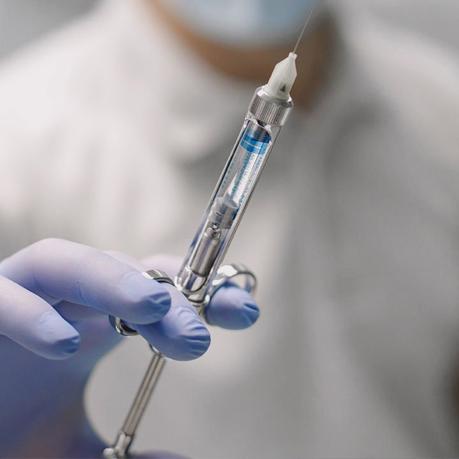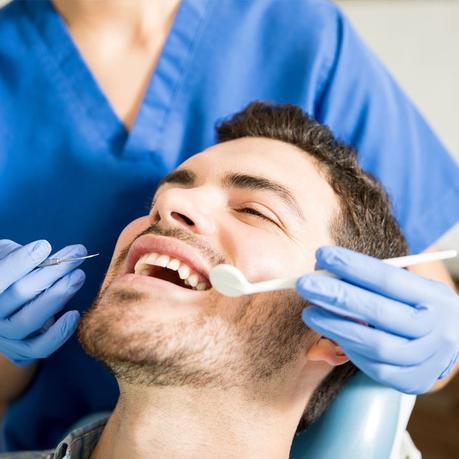
Different materials and techniques are used to anesthetize the oral environment, depending on the type of application that the dentist has in mind.
Lidocaine is the most common anesthetic used in the dental office. Dentistry is scary for many people; That big and strange chair with the lights and wires hanging from it, and like a hornless giant beak and a tail, makes its mouth crooked at the terrified people and a special smell that is always familiar but reminds us of the bitter and sweet memories of previous actions. The dentist who performed for us, throws.
Each of these alone comes with familiar dental anxiety, but alas for the moment the dentist is about to begin. He goes to his closet and comes up to us with a giant metal syringe that we’ve never seen before, he takes off the cap of the syringe and reveals the numbing fluid coming out of the needle head.
After this moment, we may prefer to close our eyes and just feel and not see the rest of the story. The environment of the mouth, including the teeth, is an environment full of nerves and sensory receptors. Any manipulation in the oral environment may stimulate the receptors and cause pain.
Apart from the noise of rotating dental instruments that annoys many dental office visitors, the fear of painful dental operations is also very annoying. Dental anesthetics have come to the aid of people and they relax both the patient and the dentist with the party participating in dental treatment.
Not necessarily all dental operations are painful or their pain is not so severe that anesthesia is needed. In other words, the dentist decides individually whether to apply anesthesia or not.
The Different Types of Dental Anesthesia
For most dental procedures and treatments, the patient must be anesthetized to avoid pain and possible complications. Patients usually receive 3 types of anesthesia depending on the type of treatment and duration of treatment, age and level of anxiety they have. In this article, brief information about all 3 types of dental anesthesia is presented, which can be useful for you to read.
Local Dental Anesthesia
Dental anesthesia (local) is the most common type of sedation in dentistry. Dentists usually use this type of anesthesia to perform light and small treatments. Before performing any of the following procedures, dental anesthesia is injected locally into the patient’s gums:
- Filling teeth
- Pull tooth
- Tooth extraction or root canal treatment
- Dental crown installation
- Tooth scaling and root planning
What Are The Most Important Dental Local anesthetics?
Local anesthesia is applied by injecting the drug. The most common drugs used to numb teeth are:
- Lidocaine
- Articaine
- Prilocaine
- Mepivacaine
- Bupivacaine
Local Anesthesia Techniques In Dentistry
These medications are used topically or injected into a special place in your mouth. They usually take effect in less than 10 minutes and numb the target area.
With local dental anesthesia, even though the area is numb, you will still be conscious and able to communicate. The effects of anesthesia will remain during the procedure and for several hours afterwards.
Sedation
Sedation is a type of dental anesthesia that is used for sedation in a large number of patients. Sedation dentistry can help relieve the patient’s anxiety and fear during dental work or reduce pain and prevent patients from moving during the procedure.
Anesthesia and sedation can be prescribed to the patient as mild, moderate or deep:
- Mild dental sedation keeps you awake and able to respond to commands.
- Moderate sedation may put you in a semi-conscious state.
- Deep sedation also often leaves you unaware of your surroundings so that you cannot respond to stimulation.
What Are Sedation Anesthetic Drugs?
One of the most common dental anesthetics given to patients for sedation is nitrous oxide (or laughing gas). Nitrous oxide is an inhalable gas and is widely used in pediatric dentistry. Other examples of sedation include:
- Diazepam (Valium)
- Midazolam (Versed)
- and propofol (Diprivan)
QUALITY AFFORDABLE DENTAL IMPLANTS
Copperhills Family Dentistry specialists provide specialized dental services that help our patients cultivate healthy and happy smiles. We’re happy to provide compassionate care coupled with cutting-edge technology.
Read moreWhat do people need to receive sedation?
Patients with severe anxiety usually need to receive sedation before the injection of dental anesthesia and the start of their treatment (especially if they have a fear of needles). People with dental phobia, who have an intense fear of going to the dentist, are also often calmed down before treatment begins with this method.
General Anesthesia
General anesthesia leads to temporary loss of consciousness during dental procedures. The patient needs general anesthesia in dentistry in 3 cases:
- When a heavy operation is performed for a long time
- When the patient’s anxiety and fear of the operation are very high
- When the patient moves too much during the operation and does not cooperate
This type of anesthesia is often referred to as synthetic good. The patient remains unresponsive throughout the procedure and does not feel any pain. Most importantly, he will not remember any memory of the action and the moments after it. General anesthesia is administered by inhalation or intravenous (IV) injection.

Whitening cosmetic
dentistry dental cleaning
and checkups
Differences of Intravenous Sedation & General Anesthesia
The difference between dental local anesthesia and conscious IV sedation is the patient’s ability to respond and breathe on their own without a machine. In anesthesia, it is necessary to breathe through the device and nothing is felt, but with intravenous anesthesia, the patient breathes without the need for a device.
What Dental Procedures Require General Anesthesia?
General anesthesia is usually provided for hospitalized patients undergoing invasive oral surgery. Some of the most important oral and dental procedures that require this type of anesthesia include:
- Dental bone grafting
- Maxillofacial Surgery
- Surgical tooth extraction
- Oral cancer surgery
- Sleep apnea surgery
- Some cosmetic dentistry procedures
- Cleft lip or palate surgery
What Are The Complications of Dental Anesthesia?
Dental anesthesia is a common and completely safe treatment. However, to prevent side effects or problems, measures must be taken by the dentist before prescribing. The dentist should be aware of your complete medical history, history of alcohol abuse, and any possible allergies you may have to avoid complications.
Dental self-anesthesia usually has no side effects, but sedation or general anesthesia can cause some of the following side effects or symptoms after treatment:
- Nausea
- Dizziness
- Vomit
- Swelling (in the mouth or at the injection site)
- Sweating or shaking
- Confusion
- Feeling delusional
- Tiredness
- Jaw locking
For which people are dental anesthesia inappropriate?
As mentioned, dental anesthesia is generally considered a safe, effective, and necessary method of dental care. However, there are certain groups of people who are at risk of its side effects. Some of these people are:
- Pregnant women
- Pediatric patients
- People with special needs
- The elderly
- Anyone with liver, kidney, lung or heart problems
- People with neurological diseases
- People who take other drugs such as opioids
- People who have a history of allergy to anesthetics
What to Eat after Tooth Anesthesia?
You should not eat for a few hours after the anesthesia because the effect of anesthesia is delayed and you may have difficulty chewing and swallowing. However, the dentist sometimes recommends ice cream and cold drinks after tooth extraction. Also, a few hours after dental anesthesia, you can eat soft and watery foods at the right temperature. Open the list of soft and watery foods and learn about the foods you can eat after anesthesia.

